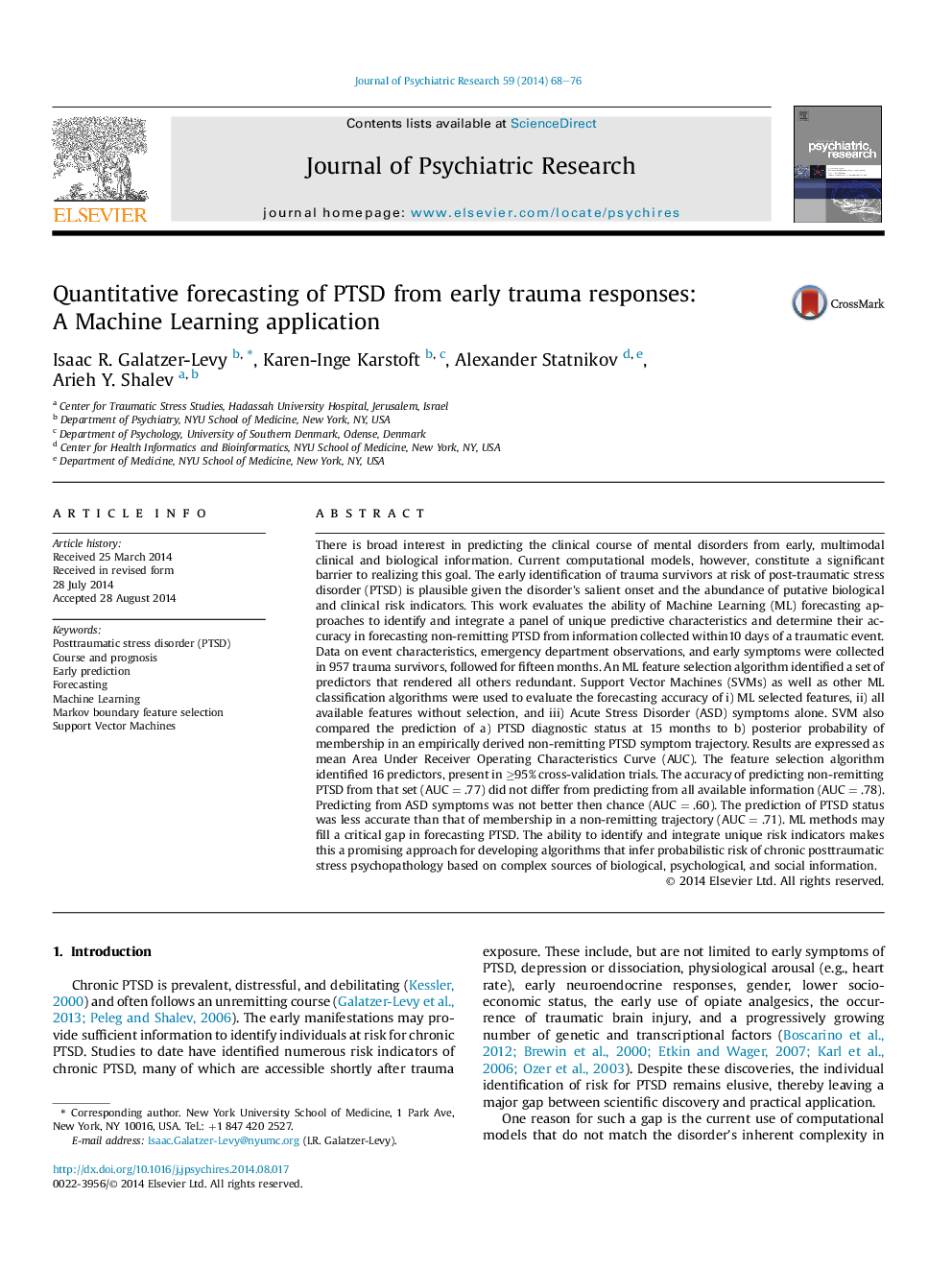ترجمه فارسی عنوان مقاله
پیش بینی کیفی اختلال استرس پس از حادثه از واکنش های ترومای اولیه: برنامه یادگیری ماشین
عنوان انگلیسی
Quantitative forecasting of PTSD from early trauma responses: A Machine Learning application
| کد مقاله | سال انتشار | تعداد صفحات مقاله انگلیسی |
|---|---|---|
| 60313 | 2014 | 9 صفحه PDF |
منبع

Publisher : Elsevier - Science Direct (الزویر - ساینس دایرکت)
Journal : Journal of Psychiatric Research, Volume 59, December 2014, Pages 68–76
ترجمه کلمات کلیدی
اختلال استرس پس از ضربه ؛ پیش بینی زودهنگام؛ پیش بینی؛ فراگیری ماشین؛ ماشین بردار پشتیبان
کلمات کلیدی انگلیسی
Posttraumatic stress disorder (PTSD); Course and prognosis; Early prediction; Forecasting; Machine Learning; Markov boundary feature selection; Support Vector Machines

